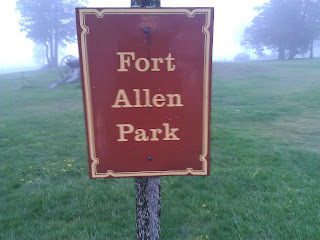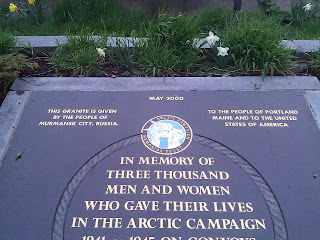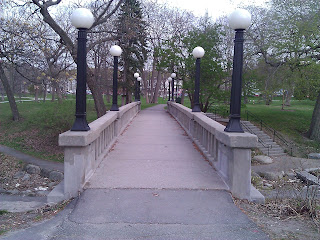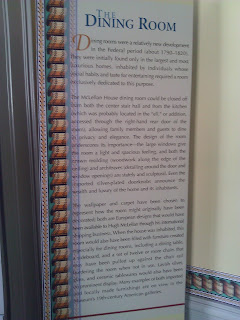Observations and Reactions:
I
had been to Fort Allen Park about a dozen times before this visit. I usually go
to watch the fireworks on July 4. I have never been disappointed when I visited
the park. It has a World War II memorial for the USS Portland which is probably
the coolest thing to visit in Portland, in my opinion. The people there are
either walking, running, or playing with their dogs throughout the year and on
July 4 there are hundreds of people there to watch the fireworks on Munjoy
Hill. It is a very nice park and it is very well maintained. The grass could be
4 feet long and infested with ticks and I think I would still visit to see the
USS Portland memorial.
Historical Background:
Eastern
Promenade was constructed from 1836 until 1934. It acquired Fort Allen in 1890
and in 1912 the Olmsted Brothers redesigned the area to its present day status.
In 1959 Portland acquired part of the USS Portland and constructed the memorial
that is currently there. Prior to being sold for scrap the USS Portland has a
very successful wartime career in the Pacific theater of war during World War
II. The ship barely missed the Japanese attacks at Pearl Harbor as it was
patrolling the coast of Fiji. At the Battle of the Coral Sea the ship aided the
USS Yorktown, a carrier, in its defenses and saved over 700 survivors of the
sinking USS Lexington. At the Battle of Midway the USS Portland again aided the
Yorktown in its defenses from Japanese airplanes and rescued over 2000 sailors
from the Yorktown after it was damaged. The Portland then escorted the USS
Enterprise on a mission to Guadalcanal and fought later at the Solomon Islands.
In October the cruiser was damaged for the first time at the Battle of Santa
Cruz Islands. Finally the USS Portland, after repairing itself, took part in
the Battle of Guadalcanal where it was struck by a Japanese torpedo. The final
major battle for the Portland was the Battle of Surigao Strait where it won a
very important victory for the United States. At the end of the war the ship
had earned 16 battle stars. Fort Allen Park also has a very small Civil War
Monument that is dedicated to the Union Army just above the USS Portland
memorial. The Maine Narrow Gauge Railroad also goes through part of the Eastern
Promenade. ”Eastern Promenade retains the
purpose and intent for which it was initially acquired and developed. It
remains significant today in providing residents and visitors with a publicly
owned and maintained site from which to take in the magnificent view of Casco
Bay and the islands.”














































